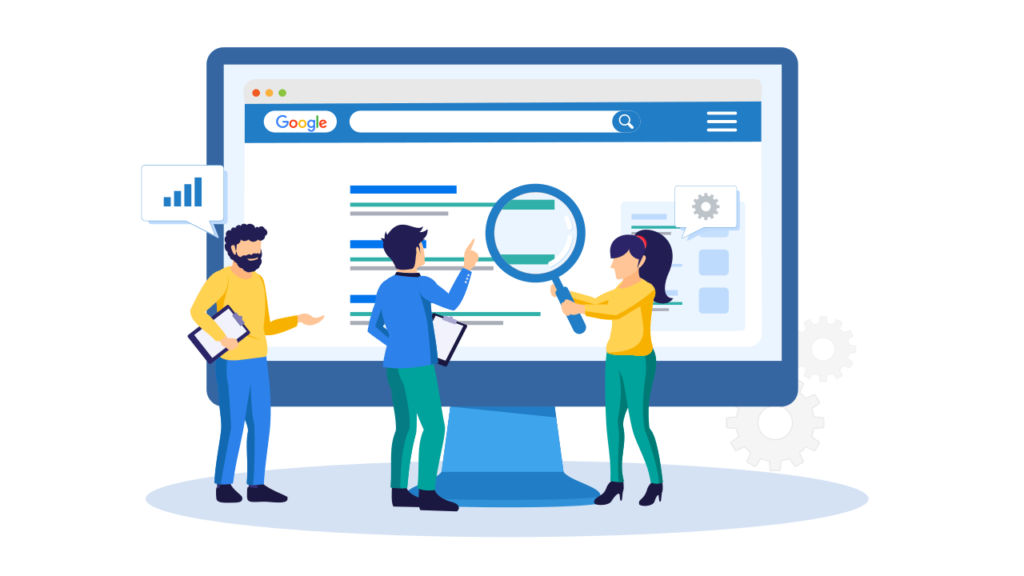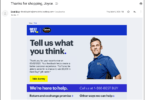No matter how new or established your website is, getting your on-page SEO right is essential.
If you read our previous guide on How to Dominate Google then you should know how important on-page SEO is. Unfortunately, we didn’t get to dive into specific details last time, but this time we’re back and solely looking at on-page SEO.
How To Improve Your On-Page SEO and Boost Your Rankings

Compared to other forms of SEO, on-page SEO is all about the factors you can change on your page that directly influences your rankings. Google will often read a page and use many different methods to determine what a web page is about. By focusing on specific elements that Google regularly reads, you can make sure Google understands your page better and therefore improve your rankings.
Before we look jump straight into our on-page SEO guide, let’s take a look at some of the most important on-page SEO ranking factors.
The Top On-Page Ranking Factors
Every few months Google updates their search engine algorithm. This means SEO practices that worked last year won’t necessarily work this year. In fact, many years ago Google used to solely rely on keywords and meta keywords to determine what a page was about.
After many webmasters abused and keyword stuffed their pages, Google stopped using these keywords as a ranking factor and started to use more sophisticated methods. Since then, there have been plenty of significant changes to Google’s algorithm almost every year. If you want to give your web page the best chance of ranking highly, then you need to know the most important on-page ranking factors. To make your life easier, we’ve put together an easy to read list of the most important on-page ranking factors and how to implement how.
Content Length
One of the most important factors when it comes to Google determining rankings is the amount of content on the page.
When Google checks pages, they are specifically looking for content-rich web pages that give the user lots of information. If they have a choice between ranking a 300-word web page for rank 1 vs a 1,000 word web page, then it will always go for the longer one.
This is because longer web pages tend to keep visitors on the page for longer and also reduce the bounce rate of the page.
In addition to giving the user a better overall experience, it also increases the chances that Google will rank for the page for long tail keywords. If you’ve heard the phrase “content is king” then they weren’t lying, not only does it improve rankings, but when written correctly it also increases sales.
Keyword Density
Another important factor when it comes to on-page SEO is the amount of keywords on a page. In the old days, Google used to primarily look at exact match keywords only. However, nowadays, Google is a lot smarter and will look at related keywords instead of just the exact phrase.
This means focusing too much on 1 keyword is not a good idea and can actually cause penalties if you use it too much. Google prefers natural content and keywords as opposed to manipulation, also known as keyword stuffing. By using related keywords that aren’t an exact match, this helps give Google a better idea of what the page is about.
Keyword In Titles & Headings
The next important factor when it comes to on-page SEO is the use of keywords in titles and headings. When Google reads a page, it always put emphasis on the title and headings of the page. This means that if you want Google to understand your website, then you need to include them in there.
Not only do they help improve your search engine rankings, but they also make the content more enjoyable for readings. Splitting up text with headings and having catchy titles is the best way to keep users on your page.
A Step By Step Checklist
Now we’ve had a quick look at some of the most important on-page ranking factors; it’s time to take a look at our step by step checklist. Let’s start off with finding the right target keyword to target.
Decide On Your Target Keyword
Before you ever make a new web page on your website, you should always have a target keyword in mind. Not only will this remind you to keep your page related to that keyword, but it will also help you plan ahead by finding related keywords.
When trying to decide on a keyword, it’s usually best to use some kind of SEO tool such as Google’s Keyword Planner, SEMRush, or AHREFS. Not only will these tools help you sift through the millions of keywords, but they’ll also give you a good idea of how competitive each one is. The chances are you’ll want to target the keyword that brings in the most traffic but is also the least competitive. If you happen to already have pages for those keywords, then you’ll want to slowly move on to the more competitive ones.
Find LSI / Related Keywords
The next step on our on-page SEO guide is to research LSI and other related keywords to use on your page. As we mentioned earlier, Google puts a lot of emphasis on the amount of keywords used but hates keyword spamming. In Google’s eyes, it’s unnatural for a web page to contain 5% of a certain keyword. To get around this, it’s best to use related keywords and phrases. Not only does this increase the relevance of the page but it also allows you to rank for long-term keyword phrases.
To find these related keywords, it’s best to use tools such as LSIGraph and SEO tools that we mentioned earlier. If you don’t have access to those tools or are struggling to find some, then you can always just do a Google search and see what phrases it returns in bold. These bold keywords and phrases will give you a good idea of how Google views a keyword. By including these on your web page you’ll increase your keyword density without over optimising and spamming keywords.
Focus On Keyword Rich Headings & Titles
Once you’ve decided on the right keywords to use and include on your page, you’ll want to make sure these keywords are included in your headings. Most important the H1 heading on your page, as this is one of the first things Google looks at. Secondly, you’ll also want also include your keyword in things such as H2 and H3 headings as well as titles.
The page title of a page is very important as again it is one of the first things Google looks at when deciding what the page is about. To increase your chances of ranking higher, it’s also best to try and include it at the start of the title. This is because Google puts more emphasis on the first few words in a title or heading as opposed to the few.
Include Alt Text On Images
When you’ve finished writing your content, you’ll probably want to include some pictures to help space it out. There is nothing worse than trying to read a whole wall of text without any spacing or supporting content. By including images not only do you make it easier for readers to digest, but it also helps Google understand a web page better. By using keyword rich alt text on these images, Google can read a page much better.
When using keywords in alt text, it’s important to use a mix of exact match and related keywords. Using the same keyword over and over again could see you punished for keyword stuffing. Using a handful of both types of keywords is the best way to improve your rankings.
Take Action Today!
Now you know the most important on-page SEO factors and what to include on your website, it’s time to take action. Knowing what to change on your website won’t help you until you actually change it. No matter if it’s a 5 minute or 5 hour job, it’s important to take action and implement these changes on your website. If you follow our 3 step guide and focus on improving your on-page SEO, then you’re pretty much guaranteed to improve your rankings.







Leave a Comment
You must be logged in to post a comment.